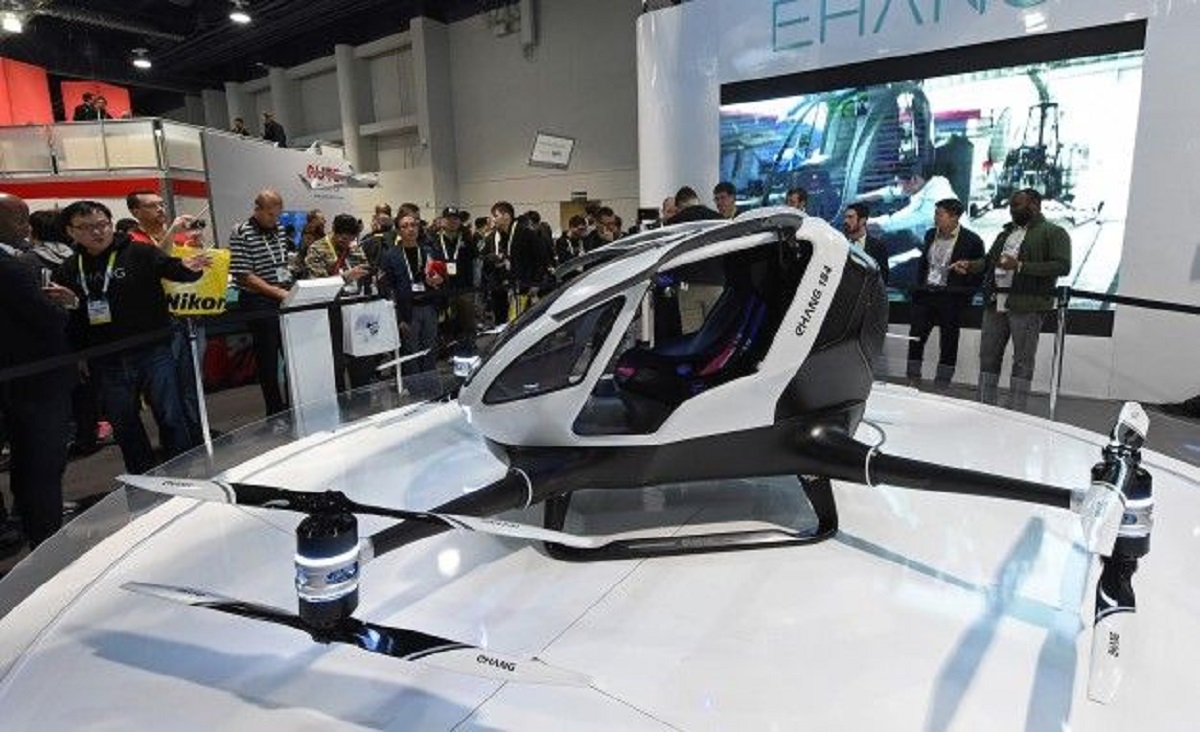Drone cars have the potential to transform various industries and aspects of our lives.
What is a Drone Car?
By eliminating the need for human drivers, drone cars have the potential to offer numerous benefits.

It is important to note that drone cars are not limited to passenger vehicles.
They can also encompass other types of vehicles, such as delivery trucks, taxis, and public transport.
The concept of drone cars extends beyond personal transportation and aims to reshape various aspects of the transportation system.
With continuous advancements in technology, the capabilities of drone cars are expanding.
This competition aimed to promote the development of self-driving vehicles capable of navigating difficult terrains and completing complex tasks.
The competition saw amazing progress, with several vehicles completing the course and proving the potential of autonomous technology.
This event captured public attention and generated significant media coverage, further fueling the development of drone cars.
Lets now explore the different types of drone cars that are transforming the automotive landscape.
While these features provide some assistance to the driver, they still require human control and oversight.
However, the driver still needs to remain engaged and be ready to take control when necessary.
Examples of level 2 autonomous vehicles include Teslas Autopilot and GMs Super Cruise.
Audis Traffic Jam Pilot is an example of a level 3 autonomous system.
These vehicles are designed for specific areas or roadways, and they may require human intervention in exceptional situations.
Waymos self-driving cars are currently operating at level 4 autonomy in certain areas.
Level 5 drone cars require no human intervention and can handle complex driving scenarios and routes.
However, true level 5 autonomy is still under development and not yet widely available.
Its important to note that the transition between these levels of autonomy is not always linear or strictly defined.
Some vehicles may have advanced autonomous features while still requiring driver attention and intervention in certain scenarios.
How do Drone Cars Work?
Drone cars rely on a combination of advanced technologiesand sensors to navigate and operate autonomously.
Cameras provide visual information, while radar and lidar help detect objects and measure distances.
GPS is used for positioning and navigation purposes.
AI enables the vehicle to interpret and make decisions based on the input received from the sensors.
Electric motors and actuators are responsible for executing these commands, enabling the vehicle to follow its planned trajectory.
Communication Systems: Autonomous vehicles often communicate with each other and with infrastructure systems to enhance safety and efficiency.
Its important to note that the technology behind autonomous vehicles is constantly evolving and improving.
Achieving truly autonomous vehicles that can operate in all conditions and environments remains a complex challenge.
Lets explore some of the key applications of these autonomous vehicles:
1.
Personal Transportation:One of the most significant applications of drone cars is in personal transportation.
Autonomous vehicles can provide safer and more efficient journeys, freeing up road space and reducing traffic congestion.
Drone cars can navigate efficiently, making last-mile deliveries more convenient and environmentally friendly.
Public Transportation:Autonomous vehicles can enhance public transportation systems by providing efficient and flexible services.
These vehicles can optimize routes, improve accessibility, and reduce the reliance on individual car ownership.
Autonomous vehicles can provide on-demand, point-to-point transportation, bridging the gap between transportation modes and improving overall connectivity.
Healthcare Services:Autonomous vehicles have the potential to transform healthcare services by enabling reliable and efficient medical transportation.
They can be used for traffic monitoring, accident response, and surveillance purposes.
These are just a few examples of the diverse applications of drone cars.
Now, lets explore some of the challenges and controversies surrounding drone cars as this technology continues to develop.
Lets examine some of the key concerns surrounding this technology:
1.
Safety:Safety remains a paramount concern for autonomous vehicles.
Despite rigorous testing and advancements in technology, accidents involving self-driving cars have occurred.
Legal and Regulatory Frameworks:The legal and regulatory landscape for autonomous vehicles is still evolving.
Governments and authorities are grappling with issues such as liability, insurance, privacy, and cybersecurity.
Building trust through transparency in technology, rigorous testing, and clear communication will be vital.
Technological Limitations:While significant progress has been made, autonomous vehicle technology still has limitations.
Adverse weather conditions, complex urban environments, and unmapped areas can pose challenges for drone cars.
Continued advancements in sensor technology, AI algorithms, and vehicle-to-vehicle communication are necessary to overcome these limitations.
Social and Economic Impact:The widespread adoption of drone cars may have profound social and economic implications.
Cybersecurity:As with any connected technology, autonomous vehicles are vulnerable to cybersecurity threats.
Lets explore some of the exciting possibilities and potential developments for autonomous vehicles:
1.
This integration can lead to more sustainable and livable urban environments.
Electric and Sustainable Solutions:The widespread adoption of autonomous vehicles presents an opportunity for more sustainable transportation.
This integration can provide users with a wide range of transportation options and promote efficient and convenient multi-modal journeys.
New Business Models:The emergence of drone cars will likely bring about new business models and opportunities.
Conclusion
The world of drone cars presents a fascinating glimpse into the future of transportation.
From personal transportation to delivery services and public transit, the applications of drone cars are vast and varied.
However, the journey towards fully autonomous vehicles is not without its challenges and controversies.
Despite these challenges, the future of drone cars appears promising.
The world of drone cars awaits, and the possibilities are boundless.